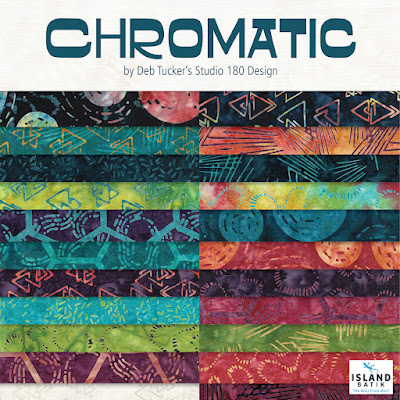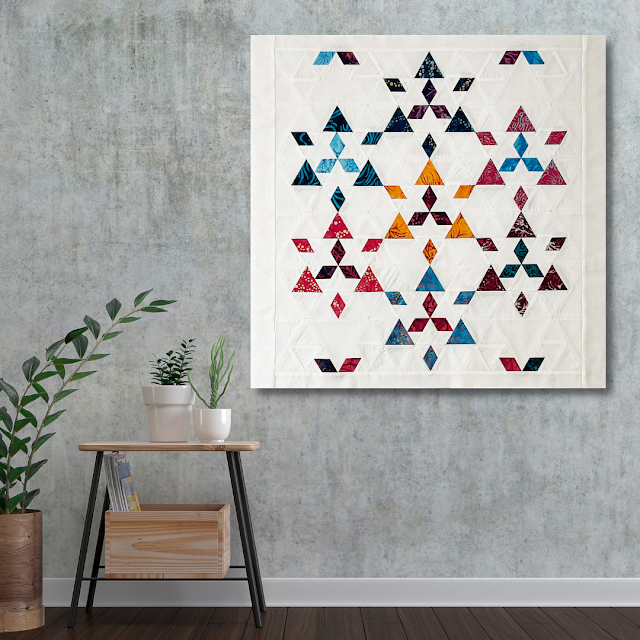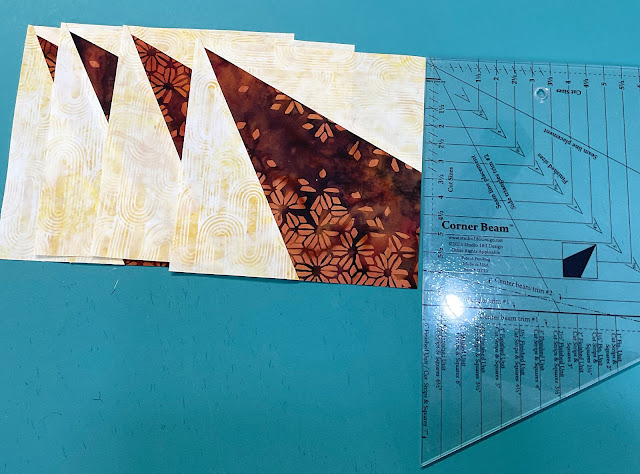Welcome to the final day of the Bubbles, Curves and Corners Blog Hop.
I hope you have enjoyed the projects shared by the Studio 180 Design Certified Instructors, who have used the new Deb Tucker Studio 180 DesignBubbles, Curves and Corner Fabric Collection for Island Batik, and Blockbuster Blocks. It's been great to see the different projects that each participant has created. One thing I love about the Studio 180 Design Fabric Collection is the vibrant array of colors in each new collection they release.
If you missed any of the other blogs, please check the list below to read and see the beautiful projects by Studio 180 Design Certified Instructors in this block hop.
Saturday, October 12 - Studio 180 kick-off
Monday, Oct. 14 - Allison Spence
Tuesday, Oct. 15 Sue Adams
Wednesday, Oct. 16 Tracy Stinger
Thursday, Oct. 17 Diana Mann
Friday, Oct. 18 Kathy Tucker
Saturday, Oct. 19 Tina Dillard (Today)
Monday, October 21 - Studio 180 wrap-up
Hello, everyone. I’m Tina Dillard. I am a Certified Instructor, Author, Teacher, and Designer at Quilting Affection Designs. I love designing companion patterns for the Studio 180 Design tools, and I have two helpers who assist me in my studio and office daily. In fact, I had the pleasure of creating a new pattern that includes Bubbles, Curves, and the Corner Fabric Line. Keep reading for more information.
Today, I want to showcase my Bubbles, Curves and Corner project, which was made with Blockbuster #86, What’s Your Angle Block. This block utilizes the Studio 180 Design Corner Pop® III and Tucker Trimmer® tools. If you follow me on social media and my patterns, you know that I enjoy working with the Corner Pop tools, so I couldn't resist making this block. Using these beautiful fabrics for this block was genuinely delightful.
 |
| Bench Pillow made from Blockbuster #86 |
For my project, I chose to make a bench pillow instead of a regular table runner or wall hanging. I selected four different fabrics from a collection that included cool and warm colors. For the background fabric, I selected an Island Batik neutral called "Almond," which perfectly complemented the collection. I designed two blocks with different red and blue stars alternating between them.
 |
| My Fabrics |
Let me walk you through the four units needed to make this block. Before that, let’s talk about how I used the four colors in this collection. I used warm red and blue colors for the center stars and corner diamonds to make them stand out. For everything else, I used cool teal, lilac, and background fabrics to create a subtle background.
 |
| Removing a Corner with Corner Pop® III |
This block consists of four units that need to be "popped." When we say "pop," we use the Corner Pop® III tool to remove a portion of the starting unit, which can be either a half-square triangle or just a square, as in this block. Then, you will replace it with a replacement triangle of a different fabric color and trim it down using the tool.
%20and%20Unit%20B%20(Bottom).jpg) |
| Units A and B |
Units A and B are Single-Pop Half-Square Triangles. Unit A consists of Type #1, which replaces the right side of the Half-Square Triangles, and Unit B will be Type #2, which replaces the left side of the Half-Square Triangles.
 |
| Unit C |
Unit C, a Double Popped Half-Square Triangle, replaces two opposite sides of a Half-Square Triangle.
 |
| Unit D Final Trim |
Unit D, Popped Corner Squares, will pop all four square corners, making the center diamond pop at the end. You will need four units for all the units in this block.
 |
| Little Ruler Work with Q16 |
After assembling my blocks, I arranged them in a row and added a subtle border around the edges. To complete the project, I used my Q16 sit-down machine for quilting and to enhance the units in the blocks. The final step was adding an envelope pillow backing to turn it into a pillow.
 |
| Bed Pillow |
The finished
pillow measured 36” x 16” and looks beautiful!
So, if you are considering a project other than the typical table runner,
why not make a bench pillow or individual pillows instead?
Let me introduce another project you can create using
the Bubble, Curves and Corners fabric collection. Every time Studio 180 Design
launches a new collection, they release new patterns and update some older ones.
They also invite a couple of Certified Instructor pattern designers to create
patterns using their latest collection. I am always thrilled to be asked to
design patterns for their collections.
 |
| Collaboration |
Introducing my latest pattern, "Collaboration," which elevates your Wedge Star® tool by integrating fundamental Wedge Star techniques with the Diamond Four Patch Technique Sheet. This pattern incorporates four unique fabrics from the Bubbles, Curves and Corners Collection. With the Studio 180 Design Wedge Star® tool, straight piecing, and no Y-seams, this pattern enables you to create this elegant 67" x 67" quilt.
 |
| Pattern Cover |
You can purchase this pattern through my website, and the fabrics, which are arriving now, can be found at your local quilt shop.
If you're interested in learning how to make this elegant pattern, I'm teaming up with Amy's Quilt Room to teach it in person at a 2 ½ day Quiltapaloosa Special Event Workshop from June 5th to 8th, 2025, in Uniontown, PA. If interested, click HERE to learn more and register. Only a few spots are available. Amy's Quilt Room also has kits available for preorder. I hope to see you there.
Thank you for allowing me to present different projects you can do with this new and exciting fabric line by Studio 180 Design. Please make
sure to check out Monday’s Wrap-Up Blog by Studio 180 Design for the Bubble, Curves and Corners blog hop.



.jpg)

































